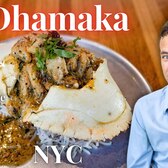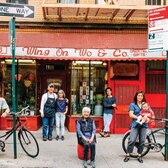They call it the world’s borough—and once you ride through Queens, you get why. In this episode of Bike Life Unchained, we dive into one of New York City’s most vibrant and overlooked bike scenes.
🚲 From the grassroots street rides of Ridgewood to mountain biking in Cunningham Park…
🏁 From racing at the legendary Kissena Velodrome to the hard-won victory for safer infrastructure on the Queensboro Bridge…
🍽️ From late-night eats at the Queens Night Market to hand-poured Bolivian coffee on the sidewalk…Queens has it all—and we’re here for all of it.
[VIDEO] The History of the Macy's Thanksgiving Day Parade in New York City
Now in its 99th year, the Macy's Thanksgiving Day Parade is one of New York City's largest and oldest holiday traditions. Each year, over 3.5 million people watch in person, while another 50 million watch from home around the world. In this video from the History Channel, learn all about the 99-year history of the Macy's Thanksgiving Day Parade.
[VIDEO] Peek Inside the Incredible Midcentury Modern St. Peter's Church in Midtown Manhattan
Built in 1977, Saint Peter's Church in Midtown Manhattan on 54th and Lex is a midcentury modern masterpiece in architecture. In this video from our friends at Curbed, peek inside as Pastor Jared R. Stahler tells you all about the building.
This holiday season, Curbed explores extraordinary houses of worship. Take an inside look at Saint Peter's Church, a midcentury masterpiece in New York City.







